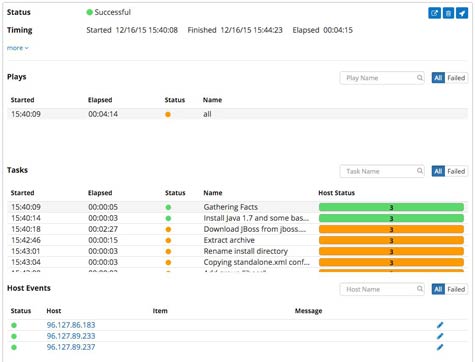As a general rule, there’s a lot more interest in IT automation than actual usage. While many IT organizations would like to automate as much of the management of IT as possible, the tools that make that automation possible have been a challenge for them to implement.
Moving to make it simpler to embrace IT automation, Red Hat today released an update to the Ansible IT automation software that is specifically designed to make it simpler for IT organizations to create playbooks to automate specific IT functions.
Greg DeKoenigsberg, director of community for Ansible at Red Hat, says not only has Red Hat added support for “task blocks” that make it simpler to create a playbook, those task blocks make it easier to handle exceptions within the context of a larger set of IT processes. A playbook parser even goes so far as to identify errors and provide suggested fixes within a playbook.
Other new capabilities include the ability to more easily reuse automation content and support for a plugin that makes it simpler to capture log information.
Ansible was acquired by Red Hat last year, and DeKoenigsberg says it is simpler to adopt than other solutions because it makes use of a more declarative approach based on YAML to set up playbooks. Those playbooks can not only be understood by machines, DeKoenigsberg says they can also be read and understood by humans. In contrast, other approaches to IT automation require the IT operations team to become familiar with a programming language.
In general, DeKoenigsberg says the biggest obstacle to IT automation at scale these days is not fear of losing a job, but rather the hundreds of undocumented custom scripts that IT organizations have already implemented. As a rule, DeKoenigsberg says those scripts don’t tend to scale very well. In addition, when the person who created that script leaves the organization, that knowledge follows them out the door.
It remains to be seen just how aggressively mainstream IT organizations will embrace IT automation in 2016. But the more complex the IT environment becomes, the more pressing an issue IT automation will become.




